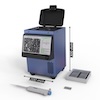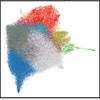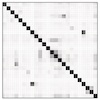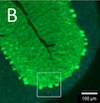 Remoscope: a label-free imaging cytometer for malaria diagnostics Trans R Soc Trop Med Hyg 2025
|
 IL-6 underlies microenvironment immunosuppression and resistance to therapy in glioblastoma bioRxiv, 2025
|
 A Trypanosoma cruzi Trans-Sialidase Peptide Demonstrates High Serological Prevalence Among Infected Populations Across Endemic Regions of Latin America medRxiv, 2025
|
 Proteomic profiling of the local and systemic immune response to pediatric respiratory viral infections American Society for Microbiology, 2025
|
 Endogenous antigens shape the transcriptome and TCR repertoire in an autoimmune arthritis model The Journal of Clinical Investigation, 2024
|
 Unveiling the proteome-wide autoreactome enables enhanced evaluation of emerging CAR T cell therapies in autoimmunity J Clin Invest 2024
|
 Total Syntheses of Cyclomarin and Metamarin Natural Products Organic Letters, 2024
|
 Anti-RGS8 paraneoplastic cerebellar ataxia is preferentially associated with a particular subtype of Hodgkin's lymphoma Springer Nature, 2024
|
 Microbial dynamics and pulmonary immune responses in COVID-19 secondary bacterial pneumonia Nature Portfolio, 2024
|
 Climate, demography, immunology, and virology combine to drive two decades of dengue virus dynamics in Cambodia PNAS, 2024
|
 Molecular mimicry in multisystem inflammatory syndrome in children Nature Portfolio, 2024
|
 Phage Immunoprecipitation-Sequencing Reveals CDHR5 Autoantibodies in Select Patients With Interstitial Lung Disease American College of Rheumatology, 2024
|
|  Ball Python Nidovirus: a Candidate Etiologic Agent for Severe
Respiratory Disease in Python regius
Ball pythons are popular pets because of their diverse coloration, generally nonaggressive behavior, and relatively
small size. Since the 1990s, veterinarians have been aware of an infectious respiratory disease of unknown cause in ball pythons
that can be fatal. We used unbiased shotgun sequencing to discover a novel virus in the order Nidovirales that was present in
cases but not controls. While nidoviruses are known to infect a variety of animals, this is the first report of a nidovirus recovered
from any reptile. This report will enable diagnostics that will assist in determining the role of this virus in the causation of disease,
which would allow control of the disease in zoos and private collections. Given its evolutionary divergence from known
nidoviruses and its unique host, the study of reptile nidoviruses may further our understanding of related diseases and the viruses
that cause them in humans and other animals.
Photo credit: Christina Wozniak.
[ Read the full open-access article at the mBio website ] |
|
